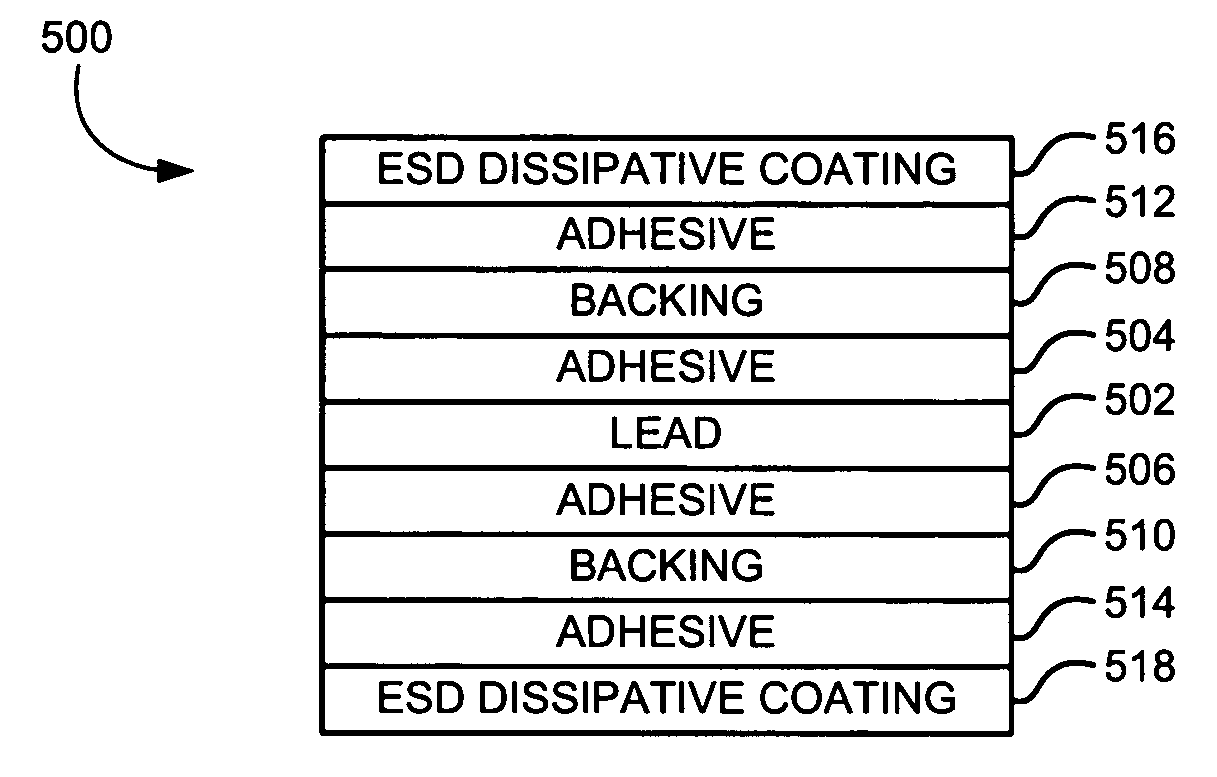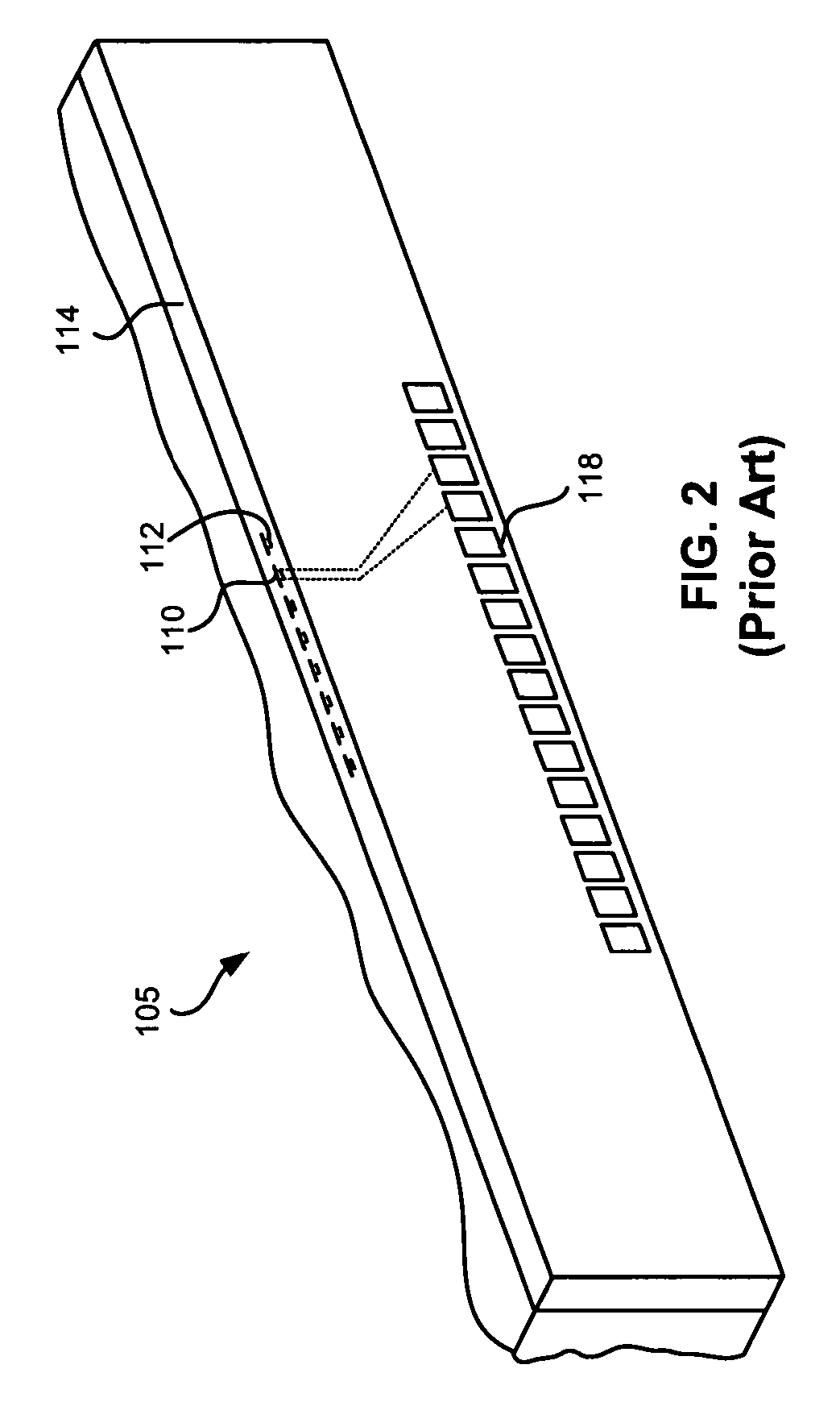ESD dissipative coating on cables
a technology of dissipative coating and cables, applied in the direction of power cables, cables, insulated conductors, etc., can solve the problems of spurious discharge of static electricity, buildup of electrostatic charges, and damage to thin sheets resistors,
- Summary
- Abstract
- Description
- Claims
- Application Information
AI Technical Summary
Benefits of technology
Problems solved by technology
Method used
Image
Examples
Embodiment Construction
[0030]The following description is the best embodiment presently contemplated for carrying out the present invention. This description is made for the purpose of illustrating the general principles of the present invention and is not meant to limit the inventive concepts claimed herein.
[0031]The present description discloses cables having an ESD dissipative portion for protecting delicate components of an electronic device from ESD and EOS damage. Although the invention is described as embodied for use with a magnetic tape storage system, the invention also applies to other electronic devices, including magnetic recording systems and applications using a sensor to detect a magnetic field.
[0032]Cables used in the storage industry for use with MR devices traditionally have electrical leads which are encapsulated in a polyimide or other electrically insulating material (e.g., KAPTON). Traditionally, the surface coating of such cables has been electrically insulating, and are susceptibl...
PUM
 Login to View More
Login to View More Abstract
Description
Claims
Application Information
 Login to View More
Login to View More - R&D
- Intellectual Property
- Life Sciences
- Materials
- Tech Scout
- Unparalleled Data Quality
- Higher Quality Content
- 60% Fewer Hallucinations
Browse by: Latest US Patents, China's latest patents, Technical Efficacy Thesaurus, Application Domain, Technology Topic, Popular Technical Reports.
© 2025 PatSnap. All rights reserved.Legal|Privacy policy|Modern Slavery Act Transparency Statement|Sitemap|About US| Contact US: help@patsnap.com



